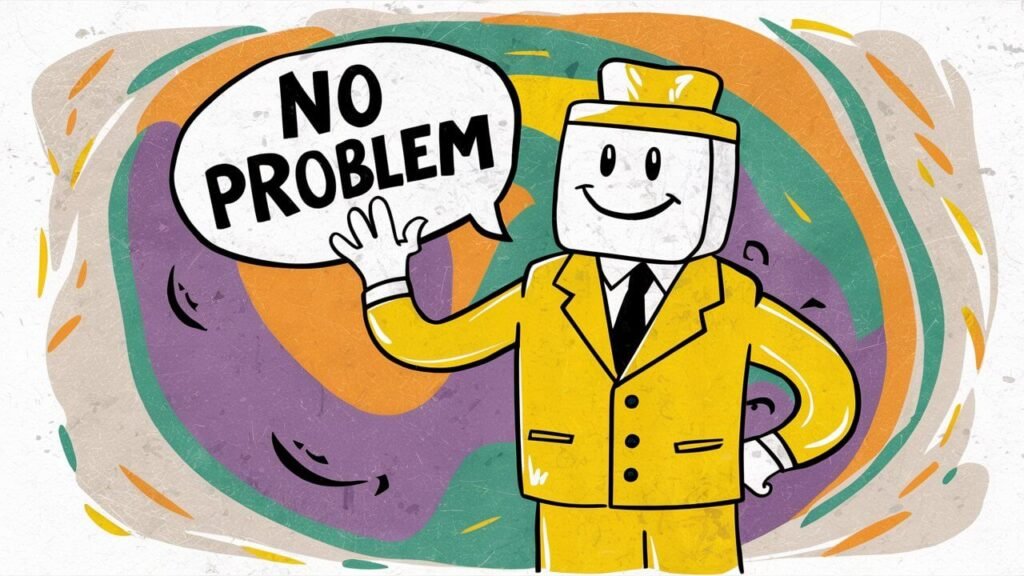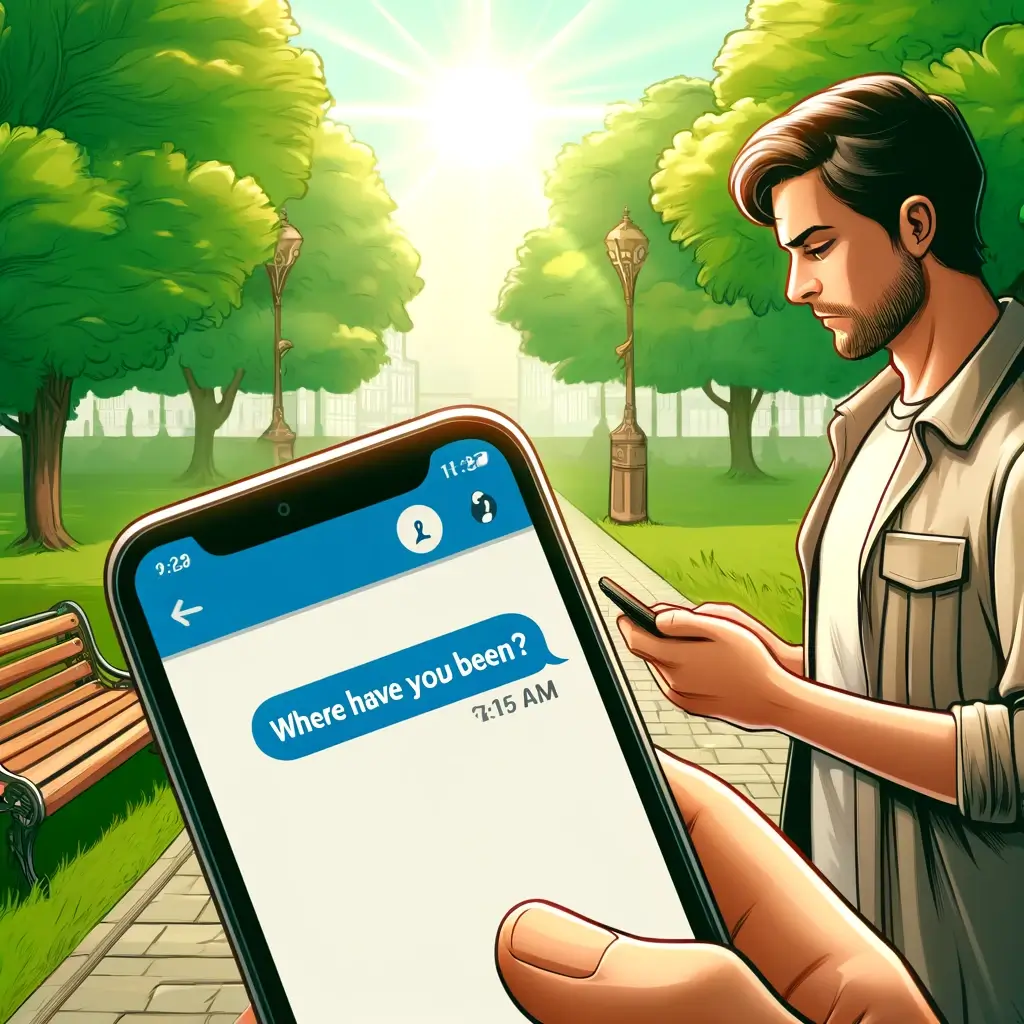
Say “You’re welcome” or “Happy to help.” These phrases are polite and convey a positive response.
Replying “No problem” can sometimes come across as dismissive. Using alternatives like “You’re welcome” adds a touch of warmth and professionalism. It shows that you appreciate the other person and value their interaction. These small language changes can enhance communication and build better relationships.
Polite responses create a positive environment, whether in personal or professional settings. Being mindful of your words can significantly impact how others perceive you. Simple adjustments in your vocabulary can make a big difference. Always aim for responses that are both courteous and genuine. Your words have power; use them wisely.
The Etiquette Of Declining Graciously
Learning to decline gracefully is an art. It shows respect and politeness. Saying “No Problem” can be tricky. Different cultures have different ways of saying it. Let’s explore how to do it right.
Cultural Nuances In Saying No
Every culture has its way of saying no. In some cultures, a direct “No” is rude. In others, it is clear and acceptable. Understanding these nuances helps in better communication.
- Japanese Culture: Indirect refusals are common.
- American Culture: Direct refusals are more accepted.
- Middle Eastern Culture: Politeness is key; avoid direct refusals.
Politeness As A Universal Language
Politeness is understood everywhere. It bridges gaps between cultures. Using polite phrases can make declining easier.
| Polite Phrase | Meaning |
|---|---|
| I’m sorry, I can’t. | A polite refusal |
| Thank you for understanding. | Shows gratitude |
| Maybe next time. | Leaves room for future |
Using these phrases shows respect. It makes the conversation smoother. Always remember to smile and be kind.
Why ‘No Problem’ Can Be Problematic
Using “No Problem” seems polite. But it can cause confusion. Different cultures interpret it differently. This can lead to misunderstandings. Let’s explore why.
Misinterpretations Across Cultures
In some cultures, “No Problem” feels dismissive. It suggests there was a problem initially. This can make people uncomfortable. They might feel like a burden.
In other cultures, it’s neutral or positive. It simply means “You’re welcome.” Yet, these varied interpretations create a challenge. Communication becomes tricky.
Alternatives To Avoid Misunderstandings
Using different phrases can help. Here are some options:
- You’re welcome – This is universally understood.
- My pleasure – Shows you enjoyed helping.
- Happy to help – Convey’s willingness.
These alternatives reduce confusion. They make your intent clear. Use them to ensure smooth communication.
Tone Matters: Conveying The Right Message
Saying “No Problem” can mean different things. Your tone plays a big role. The way you say it can make people feel good or bad. Let’s explore how to get it right.
The Impact Of Voice Modulation
Voice modulation means changing how you speak. It can show feelings. A happy tone can make “No Problem” sound kind. A flat tone can seem rude. Practice using a cheerful voice.
Use these tips:
- Smile while speaking. It changes your tone.
- Speak clearly. Avoid mumbling.
- Match your tone to the situation. Be kind and polite.
Choosing Words For A Positive Tone
Words matter as much as tone. Pick words that sound friendly. Instead of just “No Problem,” try saying:
- You’re welcome.
- Happy to help.
- Anytime!
These words show you care. They make people feel valued.
| Phrase | When to Use |
|---|---|
| You’re welcome | After someone thanks you |
| Happy to help | When you assist someone |
| Anytime! | For friendly interactions |
Use the right tone and words. Make “No Problem” sound great every time.
Saying ‘No’ With A Smile
Sometimes, saying “No” can be tough. But doing it with a smile can make it easier. Smiling shows kindness and respect. It softens your message and keeps the conversation positive.
The Power Of Non-verbal Cues
Non-verbal cues play a big role in communication. They include gestures, facial expressions, and body language. These cues often speak louder than words.
| Non-Verbal Cue | Meaning |
|---|---|
| Smile | Shows friendliness |
| Nod | Indicates agreement |
| Eye Contact | Builds trust |
Understanding these cues helps you communicate better. They can make your “No” sound more polite.
Smiling: A Universal Sign Of Goodwill
A smile can bridge gaps. It is understood in every culture. It shows you mean no harm.
- Ease Tension: A smile can calm a tense situation.
- Build Rapport: Smiling helps build a connection.
- Positive Impression: People remember you in a good light.
Next time you need to say “No,” try smiling. It can make a big difference.
The Art Of Positive Language
Using positive language makes conversations pleasant. It helps people feel better. Words have power, so choose them wisely. Saying “No Problem” is common. But, there are better ways to say it. Learn how to use positive words instead.
Using Affirmative Phrases
Affirmative phrases sound cheerful. They make conversations happier. Instead of “No Problem”, try these:
- You’re Welcome
- Glad to Help
- My Pleasure
- Anytime
These phrases show willingness. They make the other person feel valued. Simple words can make a big impact. Choose positive words always.
Avoiding Negative Constructs
Negative constructs can sound harsh. They might make people feel bad. Saying “No Problem” has a negative word: “No”. Avoid using words that sound negative. Instead, use phrases without negative words:
| Negative Construct | Positive Alternative |
|---|---|
| No Problem | You’re Welcome |
| Don’t Worry | It’s Okay |
| No Trouble | Happy to Help |
Using positive language can change your tone. It improves interactions. People will enjoy talking to you more. Remember, words have power. Use them kindly.
Offering Alternatives When Declining
When saying “No problem,” offering alternatives can soften the decline. This helps maintain positive relationships and leaves a good impression. Let’s explore how to offer alternatives effectively.
The Significance Of Options
Giving options shows you care about the other person’s needs. It makes your response feel less like a rejection.
Providing alternatives keeps the conversation positive. It also opens up new possibilities for collaboration.
| Situation | Alternative Suggestion |
|---|---|
| Unable to meet a deadline | Suggest a new deadline |
| Can’t attend a meeting | Propose another time or date |
| Not available for a task | Recommend a colleague |
How To Suggest Alternatives Diplomatically
When suggesting alternatives, be polite and considerate. Use phrases that show empathy and understanding.
Here are some tips for offering alternatives:
- Start with a positive note.
- Explain why you can’t fulfill the request.
- Offer a helpful alternative.
For example, instead of just saying “No problem,” you could say:
“I can’t help with that right now. Can we try this instead?”
Diplomatic language makes your suggestions sound more thoughtful. It shows you respect the other person’s needs.
Using these strategies, you can decline requests gracefully. Offering alternatives keeps your interactions positive and productive.
Assertiveness Vs. Aggression: Striking A Balance
Assertiveness is vital for effective communication. It’s about expressing yourself clearly and respectfully. Yet, balancing assertiveness and aggression is tricky. The way you reply “no problem” can reflect this balance. Let’s explore how to be assertive without being aggressive.
Understanding Assertive Communication
Assertive communication helps you stand your ground. It also respects others’ feelings. When replying “no problem,” use a confident tone. This shows you are helpful but not a pushover.
Here are some key points to remember:
- Use “I” statements to express your feelings.
- Maintain eye contact to show sincerity.
- Keep your voice steady and calm.
Assertiveness builds trust and mutual respect. It makes your message clear and reduces misunderstandings.
Avoiding Aggressive Tones
Aggressive communication can alienate others. It often involves a loud voice or harsh words. To avoid this, check your tone when saying “no problem.” Ensure it sounds friendly and genuine.
Some tips to avoid aggression include:
- Avoid blaming or criticizing others.
- Use positive body language like nodding.
- Practice active listening to understand others better.
Being aggressive can harm your relationships. It makes others defensive and less cooperative.
Here’s a comparison table to understand better:
| Assertive | Aggressive |
|---|---|
| Respectful and clear | Harsh and demanding |
| Calm and steady voice | Loud and forceful voice |
| Positive body language | Negative body language |
Balance is key in communication. Practice these tips to reply “no problem” assertively, not aggressively.
Practice Scenarios For Graceful Declines
Learning to decline gracefully is a valuable skill. It helps maintain relationships. This section explores practice scenarios. You will learn to say “no problem” in different situations. These scenarios will help you respond gracefully and confidently.
Role-playing Common Situations
Role-playing can prepare you for real-life declines. Here are some common situations:
- A friend asks for a favor: “Can you help me move this weekend?”
- A colleague requests extra work: “Can you finish this report by tonight?”
- A family member seeks a loan: “Can I borrow some money?”
Practice saying “no problem” in a polite way. For example, say, “I wish I could help, but I have other commitments.”
Learning From Real-life Examples
Real-life examples can guide your responses. Here are a few:
| Scenario | Graceful Decline |
|---|---|
| A neighbor asks you to pet-sit | “I can’t this time, but maybe next week.” |
| A colleague asks for a ride | “I’m unable to, but perhaps someone else can help.” |
| A friend wants to borrow your car | “I’m sorry, my car is not available now.” |
Use these examples to create your responses. Remember, it’s important to be honest and polite. This will keep your relationships strong and positive.
The Follow-up: Ensuring Continued Good Relations
After saying “no problem,” it’s essential to maintain good relations. The way you follow up can send important signals. This ensures continued trust and cooperation. Let’s explore how to do this effectively.
Sending The Right Signals Post-decline
Communicating after a decline is crucial. It shows that you still care. Here are some tips to send the right signals:
- Express Gratitude: Thank the person for understanding.
- Offer Alternatives: Suggest other ways to help.
- Stay Positive: Use upbeat language to keep things friendly.
Maintaining Relationships After Saying No
Saying “no” doesn’t mean ending the relationship. Here’s how to keep things positive:
- Check-In Later: Follow up to show you still care.
- Be Transparent: Explain your reasons clearly and honestly.
- Show Willingness: Demonstrate your willingness to help in the future.
| Action | Benefit |
|---|---|
| Express Gratitude | Shows appreciation and respect |
| Offer Alternatives | Provides other options to assist |
| Stay Positive | Maintains a friendly atmosphere |
Final Thoughts On ‘no Problem’
Replying with ‘No Problem’ can sometimes be misunderstood. It’s crucial to balance positivity and clarity in communication. Here are some final thoughts on using ‘No Problem’ effectively.
Embracing The Positive Aspects Of Declining
Declining a request can be tricky. Yet, it can be positive. Instead of saying ‘No Problem,’ try phrases that show your willingness to help.
- “I’m happy to help!”
- “My pleasure!”
- “Absolutely!”
These responses convey a stronger sense of commitment and enthusiasm. They leave no room for doubt about your intentions.
| Response | Meaning |
|---|---|
| “I’m happy to help!” | Shows genuine willingness. |
| “My pleasure!” | Indicates joy in assisting. |
| “Absolutely!” | Expresses strong affirmation. |
Continuous Improvement In Communication
Improving communication is a continuous journey. Small changes can make a big difference. Start by replacing ‘No Problem’ with more positive phrases.
- Practice new responses daily.
- Observe how others react.
- Adjust based on feedback.
Effective communication builds stronger relationships. It ensures clarity and reduces misunderstandings.
Always strive for clear and positive communication. It benefits both you and the person you’re speaking to.
Frequently Asked Questions
How Do You Respond To No Problem?
You can respond with “Thank you,” “You’re welcome,” or “I appreciate it. ” These phrases show gratitude and politeness.
What Is A Better Response Than No Problem?
A better response than “no problem” is “you’re welcome” or “my pleasure. ” These phrases sound more polite and professional.
What Do You Text After No Problem?
“You’re welcome!” Is a great follow-up to “No problem. ” You can also say, “Glad to help!” Or “Anytime!”
How To Reply Thank You No Problem?
You’re welcome! Happy to help. Anytime! Glad to assist.
Conclusion
Mastering the art of replying “No problem” enhances communication. It shows politeness and keeps conversations smooth. Practice these tips to respond naturally and effectively. Your interactions will become more positive, fostering better relationships. Keep refining your communication skills for more meaningful connections.

